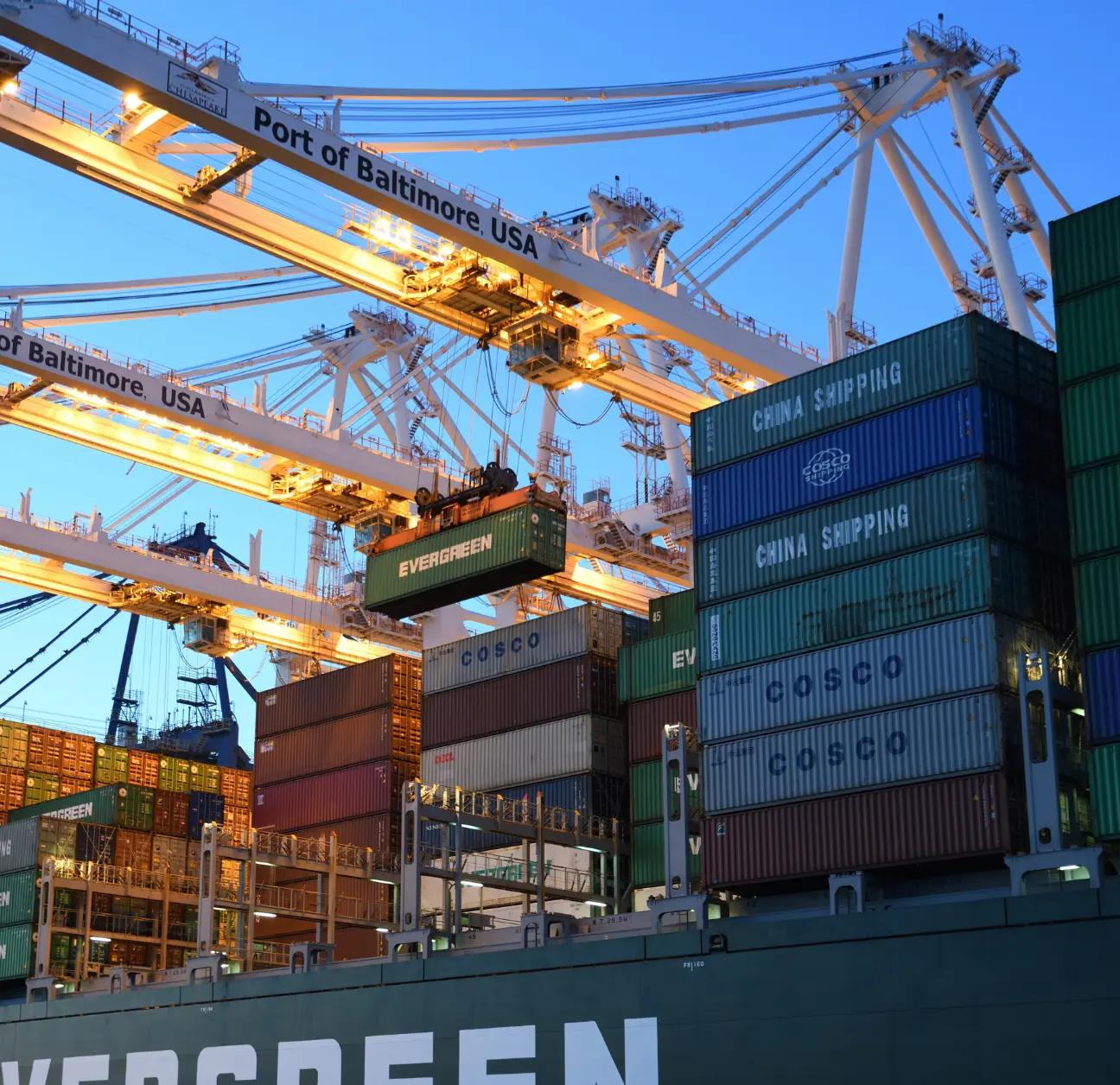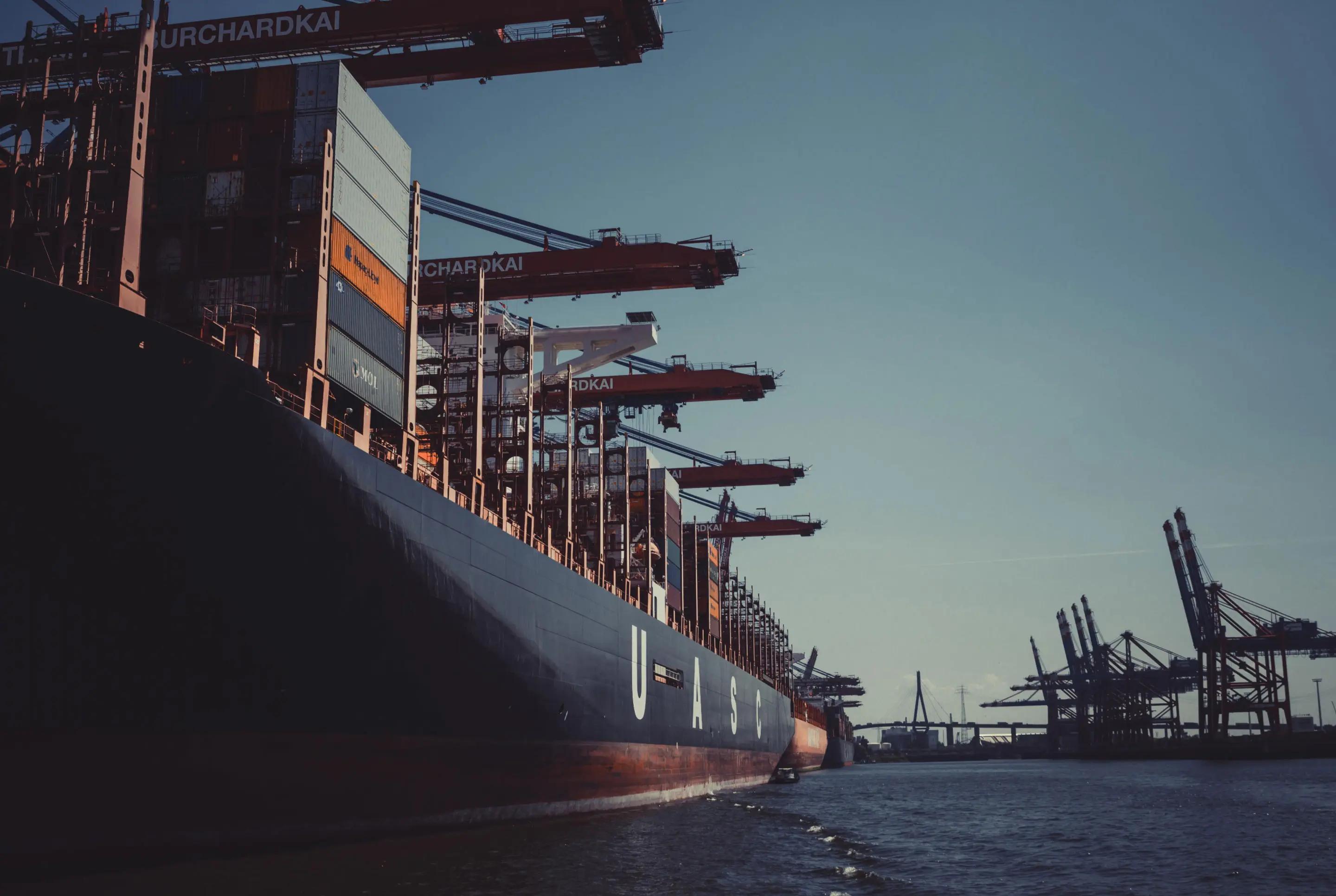Used as part of a company’s day-to-day operations, real-time freight visibility provides a company with the ability to take measures to avoid delays with shipments, identify risks for supply chain shortages, meet compliance requirements and achieve other goals by obtaining a clear, comprehensive view of overall metrics.
Freight Visibility Software
What is freight visibility? Supply chain professionals worldwide are increasingly relying on freight visibility software that gives them real-time visibility information on shipments so that they know where products are located at any given time.
Through these types of supply chain visibility solutions, users can leverage data about the location and condition of their products so that they can make decisions in real-time to ensure the on-time delivery of goods to customers.
Supply Chain Visibility Example
Everyone involved in a supply chain, including shippers, carriers, 3PLs, 4PLs, and customers, can gain insights on when a product has left the warehouse, where it is located en route to the destination, and an estimated time of arrival, all with insights from freight visibility software.
The demand for supply chain visibility escalated during the COVID-19 global pandemic, as an increasing number of customers depend upon shipped goods to function in their day-to-day lives during shutdowns. Delays at ports, traffic congestion, and closings at manufacturing plants all left many companies challenged in keeping up with disruptions throughout their supply chains.
Many shipping professionals sought out freight visibility software to keep up with customers’ demands for on-time delivery of products. This supply chain visibility software not only gave them the insights to meet customers’ expectations, but it also provided the predictive data needed to manage inventory based on fluctuations in the market.
Overall, advanced supply chain visibility software solutions have been key to a user’s ability to assess the performance of carriers, find solutions to bottlenecks, and minimize inefficiencies more quickly.
What is supply chain visibility software?
Leading providers of freight visibility software include Fourkites, Overhaul, project44, Terminal49, and Vizion API. While the features of their solutions vary based on capabilities, pricing, and level of accuracy, customers can realize the following benefits when using their supply chain solutions.
End-to-end freight visibility. Through this software, supply chain professionals can immediately identify the location of a vehicle transporting inventory, the time of port departure, the ETA of departure from a warehouse, the condition of the cargo during transit, and the ETA of final delivery.
Exception management. Supply chain visibility software platforms provide data insights that give users the ability to manage unexpected freight exceptions or delivery exceptions. These can include unforeseen events, including severe weather, vehicle breakdowns, and road closures, that can interfere with the ETA of a shipment. Using this information, shipping professionals can get into solution mode by identifying different routes or providing customers with timely updates.
Automated appointment management. Many providers of supply chain solutions give users the ability to streamline communications and schedules for carriers, shippers, and facility managers from one platform.
Real-Time Freight Visibility in Supply Chain
In the years before supply chain modernization, companies manually collected data about where shipments were located in the supply chain. They often had to depend upon data supplied by the carriers, or on outdated information about where their inventory was located, which contributed to delays and an inability to communicate accurate delivery times to customers. These types of challenges also resulted in an inability to develop a collaborative supply chain strategy or properly manage inventory levels.
With the advent of big data and technological innovations that led to IoT, real-time visibility in supply chain became a reality. Software providers were able to increase visibility in supply chain by allowing their customers to leverage big data to obtain critical information, including potential bottlenecks, time of departure from a warehouse, and estimated time of arrival to the customer.
Real-time visibility in supply chain has given many businesses a competitive edge, allowing them to use data insights to enhance demand forecasting, inventory management, business planning, and supply chain processes.
Companies still using manual methods to manage supply chains are faced with numerous logistics inefficiencies. These can result in the following business challenges.
Loss of customers. With the inability to keep up with customers' increasing expectations for fast deliveries, partly influenced by Amazon Prime's next-day deliveries, businesses that can't deliver an optimal experience regarding ETAs of shipments can face a higher customer churn rate than their competitors.
Transit risks. Without real-time visibility in supply chain, shipping professionals cannot identify potential risks that could delay shipments — including traffic congestion, theft, vehicle breakdowns, and adverse weather conditions.
Limited ability to measure performance. Real-time visibility platforms also can provide a competitive advantage to users in determining the performance of 3PLs, 4PLs, and logistics partners. Without these insights, a company could miss out on opportunities to identify partners with optimal productivity and service levels.
Supply Chain Visibility Software
With many companies experiencing increasingly complex supply chains in recent decades, real-time transportation visibility platforms have emerged as one of the most critical tools for managing supply chains.
The benefits of supply chain visibility software became clear when many businesses were faced with a series of disruptions globally in the wake of the COVID-19 pandemic. Companies had to quickly manage product shortages, warehouses filled with unsold inventory, and clogged ports during times of uncertainty.
Leading supply chain visibility companies, including Fourkites, Overhaul, project44, Terminal49, and Vizion API, provide supply chain visibility solutions that give their users an advantage in this competitive shipping market.
Through these solutions, users were able to make informed decisions based on real-time data about disruptions. As a result, they were able to minimize risks involved in the manufacturing and distribution of products as well as better plan to meet customer demands.
Companies often integrate their visibility data into their systems, like a transportation management system (TMS), or their customers' systems, using integrations from Chain.io. Here is an overview of some of the freight visibility software providers:
FourKites: Headquartered in Chicago, this real-time visibility software provider specializes in solutions for numerous industries, including manufacturing, retail, food and beverage, pharmaceuticals, and chemicals. The FourKites visibility solution provides end-to-end visibility across the supply chain from a platform.
Overhaul: This company, which is headquartered in Austin, Texas, is a supply chain control and risk management solution provider. The platform delivers a unified view of the supply in real-time, giving customers the ability to immediately respond to challenges in the supply chain ecosystem.
project44: Headquartered in Chicago, project44 offers solutions through a supply chain visibility platform that offers end-to-end insights — including over-the-road, rail, air, ocean, and intermodal transportation modes, various workflows, and order and inventory.
Terminal49: Headquartered in San Francisco, CA, Terminal49 offers all-in-one-platform container tracking solutions that help their customers make decisions faster and less time manually tracking their freight.
Vizion API: Based in San Francisco, VIZION API gives shippers and BCOs end-to-end visibility freight insights by providing automation that delivers comprehensive and detailed container tracking events to software systems and spreadsheets.
Container Visibility Software
Container visibility software gives shippers insights into the exact location of their ocean freight and its estimated time of arrival to each destination along a route, including the final destination. Container visibility data providers implement various technologies, such as ocean insights container tracking tools, to identify the location of containers.
Shipping specialists use the real-time visibility platform to enhance collaboration among carriers and partners, ensure that inventory levels or optimal, and provide a better customer experience. The real-time data also can help them proactively respond to potentially disruptive events.
People often refer to ocean freight visibility when discussing container visibility software. Since an overwhelming amount of goods are transported internationally, ocean freight has become one of the most cost-effective and popular ways of moving raw materials and other products from one country to another.
Ocean freight visibility solutions, coupled with container visibility software, give businesses critical insights as their products are moved from location to location in large shipping containers aboard vessels around the world. By some estimates, ocean freight represents 80 percent or more of all global product shipments. The mode of transportation is more cost-effective than air transport, especially for products that are larger in weight and volume.
Another consideration when using ocean freight is that companies will need to assess the cost savings, as compared to air freight, and the time of delivery as it is among the slowest shipping modes. According to some estimates, ocean freight can take several weeks to two months to arrive. While air freight is much quicker, it can be much more expensive — especially with heavier loads.
Shippers using ocean freight also need to factor in variables such as unloading times, port congestion, availability of vessels, potential delays caused by seasonal weather, and port fees. Also, ocean freight rates have steadily increased in the wake of the global COVID-19 pandemic. Ocean freight visibility software can be essential in helping shipping professionals navigate the data to make informed decisions that could save the company time and money.
Inventory Visibility Software
Companies realize the risks involved with improperly managing inventory levels, which can range from costs involved in warehousing, carrying, and transportation costs. Inventory visibility software can give users an increased ability to manage and reduce those expenses in real-time, an advantage that can make them competitive in their industries.
As an inventory visibility example, businesses generally are managing raw materials or finished products as part of the supply chain.
Real-time inventory visibility, provided by companies like IBM's Sterling Inventory Visibility API, captures data about the processing of raw materials after they leave the warehouse, the manufacturing of the raw materials into finished goods, and then the transport to the customer.
Along the way, a supply chain decision-maker can identify opportunities to gain efficiencies and address potential bottlenecks that could prevent the goods from being shipped and delivered on time. The higher the level of inventory turnover — the time it takes for materials to be moved from one stage to the next — the more a company can increase its inventory efficiency. As a result, the company can realize cost savings and a higher rate of profitability.
The time it takes for raw materials to come into your warehouse, get processed into finished goods, and be sent on their way to the customer is known as "turnover". Ideally, you want as many inventory turnovers as possible in a given period, so being able to identify bottlenecks in getting those goods quickly into and out of your warehouse is critical to accelerating inventory turnover and increasing inventory efficiency.
Chain.io Supply Chain Integrations
Ready to achieve real-time supply chain visibility? Interested in incorporating a supply chain visibility platform as part of your company’s future? As a supply chain specific integrations expert, Chain.io has successfully helped companies throughout the supply chain industry start the process of gaining end-to-end supply chain visibility by integrating data directly into their systems.
Chain.io’s supply chain integrations simplify the process of starting your digitization journey. Chain.io’s offerings include automating data from partners and customers along the global supply chain, including freight forwarders, 3PLs, and 4PLs, into your TMS and WMS platforms for real-time insights that inform better decisions on cutting costs, increasing revenue, and elevating supply chain revenue.
Through Chain.io’s data integrations, companies can overcome their supply chain visibility challenges. They can realize faster integrations that support a more resilient supply chain during disruptions that may put their operations at risk.
Chain.io's advanced supply chain integrations pave the way to a more intelligent, scalable, and functional supply chain.







